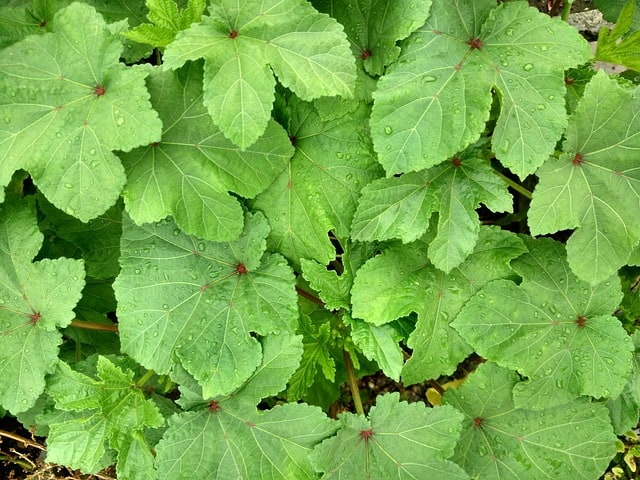Brown spots on okra leaves are a common problem for many gardeners. These spots can be caused by a variety of factors, including fungal diseases, insect damage, and poor growing conditions.
While brown spots on okra leaves may not always be a cause for concern, they can sometimes indicate a more serious problem that needs to be addressed.
Understanding the causes of brown spots on okra leaves is key to preventing and treating this problem. Some of the most common causes include fungal diseases like cercospora leaf spot and anthracnose, as well as insect pests like the corn earworm.
Poor growing conditions, such as overwatering or lack of sunlight, can also contribute to the development of brown spots on okra leaves. By identifying the underlying cause of the problem, gardeners can take steps to address it and prevent further damage to their plants.
Key Takeaways:
- Brown spots on okra leaves can be caused by a variety of factors, including fungal diseases, insect damage, and poor growing conditions.
- Identifying the underlying cause of brown spots on okra leaves is key to preventing and treating this problem.
- Preventive measures like crop rotation, proper watering, and good sanitation practices can help prevent brown spots on okra leaves. When treatment is necessary, options like copper dust or liquid copper spray may be effective.
Also read:
- Brown Spots on New Monstera Leaves
- Brown Spots on My Fig Tree Leaves
- Brown Spots on Mandevilla Leaves
Understanding Brown Spots on Okra Leaves
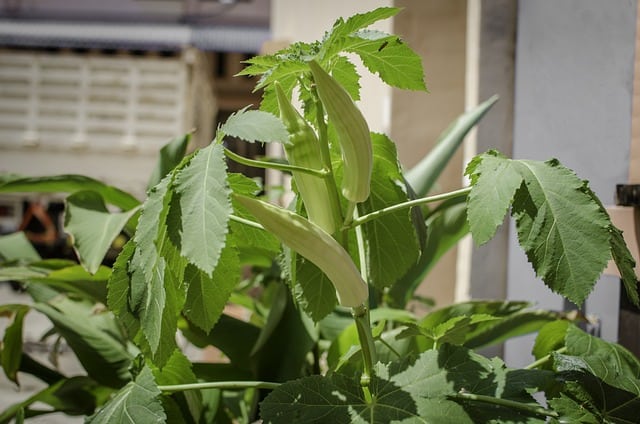
Okra plants are susceptible to various diseases, and one of the most common symptoms is the appearance of brown spots on the leaves.
These spots can be small or large, light brown or dark brown, and can have a necrotic center or not. In this section, we will explore the possible causes of brown spots on okra leaves and how to manage them.
Causes of Brown Spots on Okra Leaves
There are several reasons why brown spots can appear on okra leaves. One of the most common causes is a fungal disease called Cercospora leaf spot. This disease is characterized by small, brown irregular spots on the lower side of the leaves.
As the disease progresses, the leaves become dry and brown and may eventually curl and drop. This disease is favored by high humidity and can spread rapidly during rainy periods.
Another fungal disease that can cause brown spots on okra leaves is Alternaria leaf spot. This disease is characterized by large, circular spots with a dark brown center and a yellow halo.
The spots can merge together, and the affected leaves can become distorted and fall off. This disease is favored by warm and humid conditions and can spread rapidly during periods of high rainfall.
Management of Brown Spots on Okra Leaves
Preventing brown spots on okra leaves involves a combination of cultural and chemical control measures. Here are some tips to help manage this problem:
- Practice crop rotation: Avoid planting okra in the same location year after year, as this can increase the risk of disease buildup in the soil.
- Keep the garden clean: Remove and discard any infected plant debris, as this can harbor fungal spores.
- Water at the base of the plant: Avoid getting the leaves wet when watering, as this can promote fungal growth.
- Apply fungicides: If the disease is severe, you may need to apply a fungicide to protect the plants. Copper-based fungicides are effective against Cercospora and Alternaria leaf spots.
Brown Spots on Okra Leaves – 2 Common Problems
Brown spots on okra leaves can be caused by a variety of factors, including fungal infections and environmental factors.
Fungal Infections
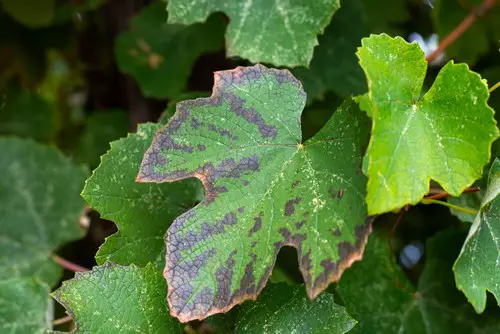
Fungal infections are a common cause of brown spots on okra leaves. Two fungi that are known to cause leaf spots on okra plants are Cercospora abelmoschi and Cercospora malayensis.
These fungi overwinter on infected plant debris in the soil and infect the roots and lower leaves of okra plants. The spores of these fungi are spread secondarily via wind, rain, irrigation, and mechanical tools.
Once the spores have landed on the leaves, they start growing and cause yellow and brown spots on the underside of the leaves. If left unchecked, the leaves will dry up and turn brown. To prevent the infection from spreading, infected leaves should be removed and discarded.
Environmental Factors
Environmental factors can also contribute to brown spots on okra leaves. High humidity and warm, wet weather provide ideal conditions for fungal growth and can increase the likelihood of fungal infections.
Water-soaked spots on leaves that become circular with gray centers are signs of leaf spot, a fungal disease. Plants that receive too much water or not enough airflow and sunlight are more likely to develop brown spots on their leaves due to moist conditions.
Additionally, excess nitrogen can also inhibit pod formation and lead to brown spots on the leaves. To prevent brown spots caused by environmental factors, okra plants should be planted in full sun, in compost-rich soil, and the soil should be kept evenly moist.
Plant-resistant varieties and rotate crops to keep the garden free of plant debris.
Impact on Okra Plant
Brown spots on okra leaves can have a significant impact on the plant’s health and productivity. The severity of the impact depends on the underlying cause of the spots, but in general, the presence of brown spots can weaken the plant, make it more susceptible to other diseases, and reduce its yield.
One of the most common causes of brown spots on okra leaves is a fungal infection. Fungal infections can spread quickly and cause significant damage to the plant if left untreated.
They can cause the leaves to wither, turn yellow, and eventually die, which can reduce the plant’s ability to produce fruit. In severe cases, the fungus can also affect the stems, flowers, and fruit of the plant, leading to further damage.
Another cause of brown spots on okra leaves is insect damage. Insects such as flea beetles, aphids, earworms, caterpillars, and cabbage loopers can all cause holes in the leaves, which can lead to brown spots. In severe cases, the insects can also damage the pods, which can reduce the plant’s yield.
Brown spots on okra leaves can also be caused by nutrient deficiencies or environmental stress. Inadequate water or nutrients can cause the leaves to turn brown and eventually die. Similarly, exposure to extreme temperatures, high humidity, or strong winds can also cause brown spots on the leaves.
Overall, brown spots on okra leaves can have a significant impact on the plant’s health and yield. It is important to identify the underlying cause of the spots and take appropriate measures to address it.
This may involve treating the plant with fungicides or insecticides, adjusting the plant’s watering or nutrient regimen, or providing protection from environmental stressors.
Identifying Okra Pests
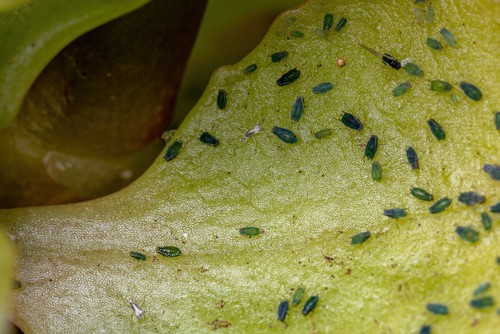
Okra is a popular vegetable that is grown in many parts of the world. Unfortunately, it is also prone to pest infestations that can cause brown spots on its leaves. Here are some common pests that can affect okra and how to identify them:
1. Aphids
Aphids are small, soft-bodied insects that can be found on the underside of okra leaves. They can be green, yellow, brown, or black in color and can reproduce rapidly, causing significant damage to plants.
Aphids feed on the sap of the plant, causing leaves to curl and turn yellow. They can also transmit viruses that can cause further damage to the plant.
To identify aphids on okra, look for clusters of small insects on the underside of leaves. They can also be identified by the sticky residue they leave behind, known as honeydew.
2. Corn Earworm
Corn earworm is a common pest that affects many vegetables, including okra. The larvae of the corn earworm can cause significant damage to okra pods, leaving holes and causing them to rot. They can also feed on the leaves of the plant, causing brown spots and other damage.
To identify corn earworms on okra, look for small, cream-colored larvae with few markings. As they mature, they can become green, reddish, or brown in color with pale longitudinal stripes and scattered black spots. They are moderately hairy and can grow up to 44mm long.
3. Okra Pests
Okra pests can include a wide variety of insects and other organisms that can cause damage to the plant. Some common okra pests include:
- Flea beetles: Small, black or brown insects that can cause small holes in leaves and stems.
- Leafminers: Small larvae that burrow into leaves and cause brown spots and other damage.
- Stink bugs: Large, shield-shaped insects that can cause brown spots and other damage to okra pods.
To identify okra pests, look for signs of damage on leaves, stems, and pods. Look for insects or other organisms that may be present on the plant or in the surrounding soil.
Preventive Measures and Care
When it comes to preventing brown spots on okra leaves, there are several measures that can be taken to ensure the health of the plant. Here are some preventive measures and care tips to keep in mind:
1. Planting and Spacing
One of the most important factors in preventing brown spots on okra leaves is proper planting and spacing. It is essential to use certified seed material and plant your crops with enough spacing, so that leaves can air dry. This will help prevent the growth of fungi and bacteria that can cause brown spots on the leaves.
2. Irrigation and Fertilization
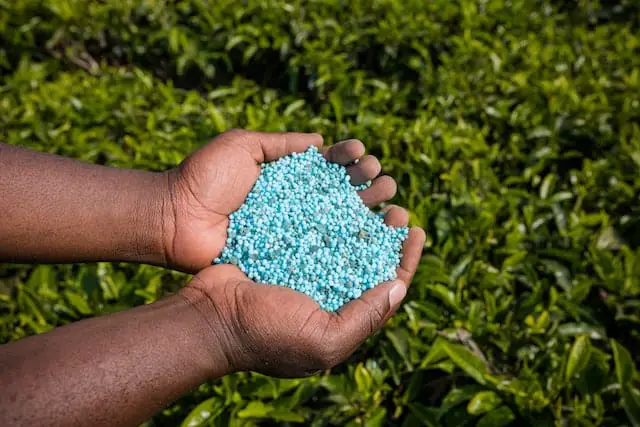
Adequate watering and fertilization are also important for the health of okra plants. Be sure to water your plants regularly and use a consistent fertilization program. However, avoid overwatering and over-fertilizing, as this can cause stress on the plant, making it more susceptible to disease.
3. Pruning and Mulching
Pruning and mulching can also help prevent brown spots on okra leaves. Regular pruning can help improve air circulation and reduce the risk of fungal growth. Mulching can help regulate soil temperature and moisture levels, which can also help prevent stress on the plant.
4. Crop Rotation
Crop rotation is another important preventive measure to consider. Rotating your crops can help prevent the buildup of soil-borne pathogens and pests that can cause brown spots on okra leaves. Be sure to rotate with other crops and avoid planting okra in the same location for consecutive years.
Overall, taking these preventive measures and care tips can help ensure the health of your okra plants and prevent brown spots on the leaves. By using certified seed material, adequate watering and fertilization, regular pruning and mulching, and crop rotation, you can help keep your plants healthy and thriving.
Treatment Options
If you notice brown spots on your okra leaves, there are several treatment options available to you. These can be grouped into three categories: fungicides, biological and organic control, and chemical control.
1. Fungicides
Fungicides are a common treatment option for brown spots on okra leaves. Copper oxychloride, mancozeb, and zineb are three fungicides that can be effective against leaf spot diseases like those that cause brown spots on okra leaves. These fungicides can be applied as a spray or dust, depending on the severity of the infestation.
2. Biological and Organic Control
Biological and organic control methods can also be effective against brown spots on okra leaves. One such method is the use of compost tea, which can help to suppress the growth of leaf spot organisms. Other options include neem oil and other essential oils, which can be used as a spray to control fungal growth.
3. Chemical Control
Chemical control methods can also be used to treat brown spots on okra leaves. However, it is important to note that these methods can be harmful to the environment and should be used with caution. Chemicals like chlorothalonil and propiconazole can be effective against leaf spot diseases, but should only be used as a last resort.
Overall, the best way to prevent brown spots on okra leaves is to practice good garden sanitation. This includes removing and destroying infected plant matter, keeping the garden free of weeds and debris, and avoiding overwatering. By taking these steps, you can help to keep your okra plants healthy and free of brown spots.
Managing Infected Okra Plants
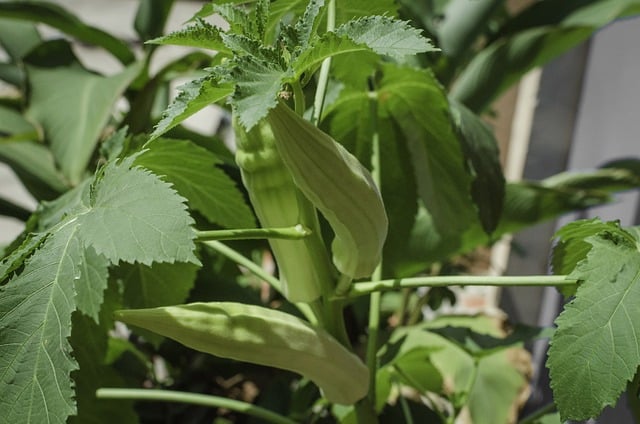
When brown spots appear on okra leaves, it is a sign of a fungal infection. To manage infected okra plants, it is important to take a few steps to prevent the spread of the disease.
Firstly, remove any infected leaves or plant debris from the garden. This will help to prevent the disease from spreading to other plants. It is important to dispose of the infected plant debris carefully, as the fungal spores can survive for a long time in the soil.
Next, consider planting okra in a different area of the garden next season. This will help to prevent the disease from spreading to the new crop. In addition, it is important to rotate okra with non-host crops to reduce the risk of disease build-up in the soil.
When planting okra, choose disease-resistant varieties if possible. This will reduce the risk of infection and help to ensure a healthy crop. It is also important to maintain good garden hygiene, such as keeping the garden free of weeds and removing any dead or diseased plant material promptly.
Finally, consider using fungicides to manage the problem. Copper-based fungicides can be effective in controlling fungal diseases on okra. However, it is important to follow the instructions carefully and avoid using too much, as this can damage the plants.
By taking these steps, it is possible to manage infected okra plants and prevent the spread of the disease. With proper care and attention, it is possible to enjoy a healthy and productive vegetable garden.
Frequently Asked Questions
What causes yellow spots on okra leaves?
Yellow spots on okra leaves may be caused by a variety of factors, including nutrient deficiencies, insect damage, or disease. One possible cause is the fungal infection Alternaria leaf spot, which can cause yellow or brown spots with a yellow halo.
Another possible cause is Cercospora leaf spot, which can cause brown spots with a yellow halo.
What are the symptoms of Cercospora leaf spot of okra?
Cercospora leaf spot is a fungal infection that can cause brown spots on okra leaves. The spots may have a yellow halo and may eventually cause the leaves to turn yellow and fall off. The infection can also affect the stems and pods of the plant.
What are the symaptoms of Alternaria leaf spot of okra?
Alternaria leaf spot is a fungal infection that can cause yellow or brown spots with a yellow halo on okra leaves. The spots may eventually cause the leaves to turn yellow and fall off. The infection can also affect the stems and pods of the plant.
How to identify leaf mold of okra symptoms?
Leaf mold is a fungal infection that can cause a white or gray mold to grow on the leaves of okra plants. The mold may cause the leaves to turn yellow and fall off. The infection can also affect the stems and pods of the plant.
What is the treatment for brown spots on vegetable plants?
The treatment for brown spots on vegetable plants depends on the cause of the spots. Fungal infections such as Cercospora leaf spot and Alternaria leaf spot can be treated with fungicides.
Nutrient deficiencies can be treated with fertilizer. Insect damage can be treated with insecticides. It is important to identify the cause of the brown spots before treating them.
How to prevent early blight of okra?
Early blight is a fungal infection that can cause brown spots on okra leaves. It can be prevented by practicing good sanitation, such as removing infected plant debris and rotating crops. Fungicides can also be used to prevent the infection.

Hey, I’m Lisa and I’ve been an avid gardener for over 30 years. I love writing, talking and living in the garden! Feel free to connect with me on my socials below

